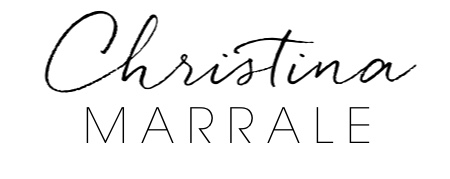Beauty Chat: Getting the Most Out of Moisturizers
Moisturizing is an essential step in our daily routine — but can be an absolute headache at the same time. Finding something that works well for your skin can seem a bit daunting, which is why I created the Beauty Chat series, an extension of Beauty Chat. Articles dedicated towards breaking down the basics and giving you the tools you need to purchase confidently. So with that said, let's dive into the confusing world of moisturizers, shall we?
The Delicate Balance of Ingredients:
Moisturizer is made up of three main types of ingredients: Humectants, Emollients and Occlusives (bear with me here, I'm about to throw down some technical talk). They all work synergistically with one another — but, what type of moisturizer you need all depends on the balance between the three. Make sense?
Find the Right Balance:
Humectants: Hydrate the surface layer of skin by attracting water from two sources: the environment and deep layers within the skin. Yep, it pulls moisture from your skin, ultimately dehydrating it, so it isn't an ingredient you'd want to use on it's own, unless you're incredibly oily.
One of the most well known forms of humectants is hylauronic acid, a naturally occurring substance in the skin that can hold and attract an incredible amount of moisture (1000x it's own weight in water to be exact).
Emollients: Delivers instant skin-smoothing satisfaction. Their main function is to "fill in the cracks" between skin cells, which is why your skin may be feeling extra plump shortly after applying. While oils tend to be the popular choice for emollients here (jojoba, argan, sunflower, rosehip, etc), I prefer to reach for something with a ceramide in it. They're emollients with a little extra oomph to them — protecting the skin barrier and strengthening it's function.
Fun fact: When the skin is deficient in ceramides, water escapes more easily. This is why they're a necessary ingredient to incorporate in the winter months. It keeps that moisture IN!
Occlusives: Finish the job by sealing everything in, creating a barrier on the skin to prevent moisture loss. This is another key ingredient to focus on in the cooler months — you want to create a shield against skin and the dry environment. Again, oils are a popular choice here (many are both occlusive and emollient) as are silicons.
What Should you Use:
If you're Dry: Humectants, occlusives and emollients are all essential to attract and lock moisture in, but the getting something high in emollients is key. This is why I love ceramides so much, it's the perfect ingredient to help combat all signs of dry skin.
If you're Dehydrated: The is not the same as dry skin. Is easy to confuse the two (and I did for years until I went to esthetics school) but they have a few distinctive differences. Dry skin is usually a surface issue, resulting in flaking, cracking, ashy skin. Dehydrated skin is more dull, lackluster, and in desperate need of water. A high level of humectants and occlusives are needed to attract and seal in moisture.
To really be certain, try the pinch test, by pinching a small area of the face. Hydrated skin will bounce back and return to shape rather quickly. Dehydrated skin takes a bit longer to return to shape, usually leaving a lingering mark where the pinch site was.
If you're Oily: Occlusives tend to bring on acne, since it's essentially creating a film on the skin's surface. So if you're oily or acne-prone, make sure you're opting for a non-comedigenic option.
If you're Normal: Find a moisturizer that strikes the perfect balance in all three ingredients. But just as with the other two skin types I address above, opt for high quality and avoid anything comedigenic just in case.
Need help narrowing down the right product for you? Book a Beauty Chat and let's keep the conversation going in a one-on-one consultation!

